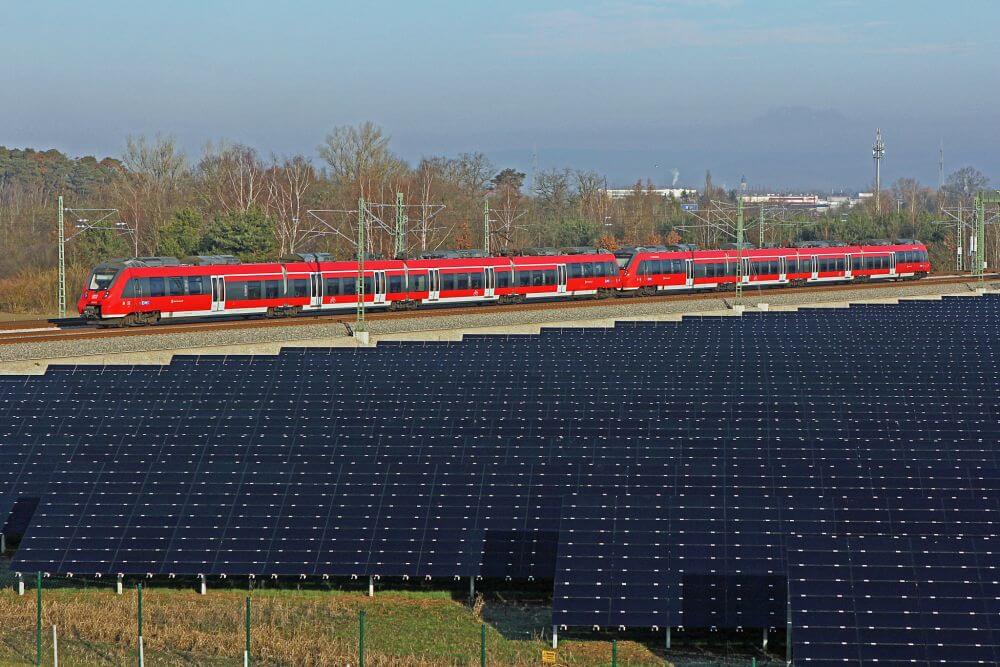| Duration: | 12/2022 - 02/2025 |
| Contracting Authority / Sponsors: |
Bundesministerium für Wirtschaft und Klimaschutz (BMWK) |
| Project Partners: | Vensys Elektrotechnik GmbH, EnBW AG, IP SYSCon GmbH |
| Project Focus: |
PV4Rail – Development of a Holistic Concept and a 1 MVA Power Electronic Converter for Feeding PV Power into the Railway Power Grid
The rail power grid has almost 8,000 kilometers of dedicated power lines, which are distributed almost nationwide in Germany and operated at a frequency of 16.7 hertz. Currently, there are no PV systems along the railway lines that feed directly into the traction power grid, as no system technology is available yet. The local potential along the railway tracks in Germany is therefore almost unused. The PV4Rail project aims to close this system technology gap by developing concepts , optimized power electronics and system technology.
The public grid provides a three-phase alternating voltage of 50 Hz. The grids for rail systems are designed as single-phase alternating voltage grids with 16.7 Hz. One significant difference between the public grid and the rail grid is the higher voltage tolerances. In the public grid, the voltage tolerance is +/- 10% (or even more, depending on the voltage level). In railway networks, voltage tolerances of over 30% can occur, which means that the power electronics must be designed for a larger voltage range. The voltage changes are very dynamic compared to the public grid. This is due to trains starting up, braking or passing the grid connection point. The inverter control system must react appropriately to these dynamic voltage changes.
The focus of the PV4Rail project and the planned pilot plant is therefore on the development of optimized control technology and power electronics for cost-effective operation. In addition to an overall concept (switchgear, transformers, etc.) as the core element, this includes the development and testing of a traction power inverter with an output of 1 MVA and the preliminary planning of a specific demonstration project. Previous pilot plants have demonstrated the plausibility of feeding PV electricity into the rail network.
Furthermore, the national total potential of the available areas is determined by analyzing geodata. The funding conditions were adjusted according to the Renewable Energy Sources Act (EEG), which made ground-mounted PV systems along tracks and highways eligible for funding up to a distance of 500 meters from January 1, 2023.
The simplified feed-in method will significantly increase the share of renewable electricity in rail networks and use efficient and cost-effective resources. The project will thus help to advance the goal of lower-carbon mobility in Germany, Switzerland and Austria. If successful, the project could serve as a model for a general adaptation of the system technology to be developed for other types of rail networks in Europe (e.g. Eastern Europe with 25 kV and 50 Hz) and worldwide, in order to tap into larger markets.
